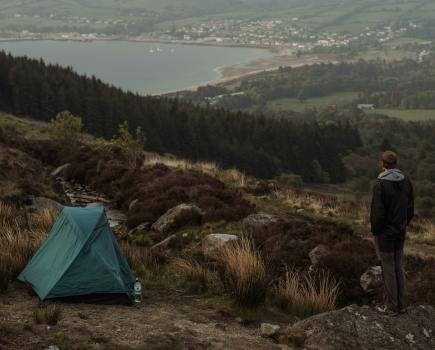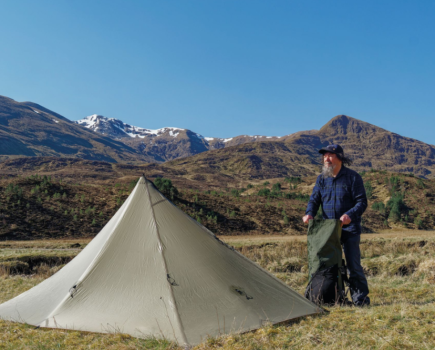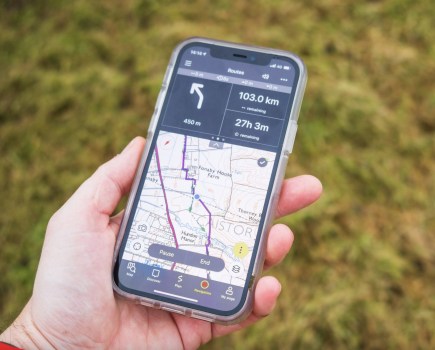The benefits of using trekking poles
Like many people I once held a bit of prejudice towards trekking poles. Initially seeing them as props for the old, injured or overweight, eventually I came to my senses after borrowing a friend’s poles for a hike – I’d asked for them as I was worried about a niggle in my knee flaring up. Not only did they prevent any injury from occurring but they genuinely seemed to make hiking feel easier – and faster.
I’ve since come to really appreciate what trekking poles bring to the table. On rocky terrain and river crossings, they add an enormous amount of stability; on steep ascents they give you an extra two limbs to haul yourself up with and on downhills they give two extra limbs to take a bit of pressure off the knees.
Many articles cite a 1999 study purporting that trekking poles take as much as 25% of strain off your joints. Since then, there have been some opposing viewpoints saying that this is an exaggeration. Speaking from personal experience, I do find that trekking poles are absolutely brilliant for making hiking with a heavy backpack less strenuous. There have been thru hikes I’ve done in the past where I’ve had absolutely no regrets about bringing poles with me, including on a west coast to east coast hike across Scotland and on a 300-mile hike through Wales.
There are times that I’ll forgo poles though and it’s normally be when I don’t have a heavy pack. In these instances, I prefer to have my hands free for when I want to scramble, pull out a map and compass to navigate or lift up my camera to get a shot. If I’m hiking with friends, with my dog or on a busy crowded trail, I’ll sometimes opt to hike without poles just so I don’t run the risk of tripping or spiking someone accidentally.
The right hiking pole technique
We once published an article titled ‘The problem with trekking poles’ which gave some of our readers opinions on the use of poles. The consensus seemed to be that trekking poles are beneficial but that’s only if they are used correctly.
Start by making sure the poles are adjusted to the right height. With the tips touching the ground and the poles bolt upright, your elbows should roughly be at a 90 degree angle when holding the poles.
The grip should be held lightly, with a nice and relaxed, natural grip. Try not to grip too tightly, as this can get tiring and it could even lead to an injury.
You also need to ensure that you are using the strap correctly. Do this by inserting your hand through the strap from below. It should then loop around the back of your hand and then come over the top of your hand.
As I go, I like to adjust the pole length accordingly based on the terrain I’ll encounter during my hike. For steep uphill sections, I’ll shorten the poles slightly for more leverage, and for steep downhill sections, I’ll lengthen them.
What materials are trekking poles made of?
Trekking poles are commonly made from aluminum or carbon fiber. Aluminum poles tend to be affordable, durable, and they have a good strength-to-weight ratio. They’re also more environmentally friendly than some other options as aluminum has a higher recyclability.
Carbon fiber poles are lighter and ideal for ultralight backpacking and they also have excellent vibration dampening. The downside is that they tend to be more expensive and, to some extent, they can be easier to break. Steel poles, which you don’t see so often anymore, are the heaviest and most robust and are suitable for extreme conditions. Ultimately, you’ll often find that poles are made from a combination of different materials to strike a balance.
Don’t forget the pole handles too. From my experience, rubber is good but it can be sticky in hot conditions. Foam tends to wear down and fall apart and plastic is best avoided as it gets slippery when it’s wet. My favourite material? That’s cork. Overtime it naturally moulds to your own hand, it’s grippy, moisture-absorbent, breathable and it’s eco-friendly too.
What feature to look for on a trekking pole
Modern trekking poles come in uniform pairs, are height adjustable and generally lightweight. They can be collapsed or folded away in transit, and have wrist straps. Here are some of the important aspects to consider when buying a pair of poles for hiking.
Straps
Straps vary in design, from simple hoops that loop around the wrist to complex systems that are designed to improve leverage. Be cautious on very steep ground – breaks or sprains can result from being ‘tied in’ to poles in this way.
Locks
When not in use, trekking poles can be folded away or collapsed down to stow in or on a hiking backpack. The three most common connections are twist lock (a friction-based system), flick lock (hinge-based), or fold lock (by tension, which depends on the cord that runs down the length of the shaft internally). The latter often collapse smaller and more lightweight but are generally less durable and cannot be completely disassembled. The joints also allow the user to adjust the height of the pole. Check that the pole you purchase has enough height adjustment for your body height.
Baskets
Baskets stop the pole sinking into the ground. Some poles are supplied with two sets – a smaller trekking basket, and a much wider snow basket for winter conditions.
Ferrule
The most common tip is a metal point, which provides excellent grip but can contribute to soil erosion in popular areas. Some poles are also supplied with a rubber foot that fits over the top of these points. which is fine for less technical terrain. When not in use, poles should always be transported on your pack with their points facing down. Mountain Rescue has plenty of grisly stories that show why.
Trekking poles, also known as trekking sticks or hiking poles, help you balance, save energy and protect your joints. They also reduce the chance of hip, back, knee or ankle injury as they create at least two or three points of contact on the ground at any one time to help to spread out our weight rather than the whole load going down through your hiking boots. When carrying heavier or multi-day loads they will also ensure that the larger load is shared between lower and upper body.
Main image: trekking in the Fisherfield Forest | Credit: James Roddie
Consider the difference between a path in your local park and the landscape of a remote mountain. As the terrain becomes more uneven, the practicality of trekking poles increases. When the trail runs out and you need to go off-track, hiking poles can then help to support your whole body as you navigate the lumps and bumps and things like bogs and rivers. Hiking poles allow us to ‘feel out’ these slippery unknowns before we enter them, gain purchase and transfer weight carefully from one limb to the next.
The same goes for snow and ice. That’s when poles provide extra security when crossing streams that are snow-covered and probing for weaknesses in the snowpack. Should the worst result and a limb needs to be ‘set’ in an accident, a trekking pole makes for an excellent splint – particularly if you wrap gaffer tape around the stem for emergencies. And for lightweight one-person tent or tarp users, they can even be used to hold up a shelter.
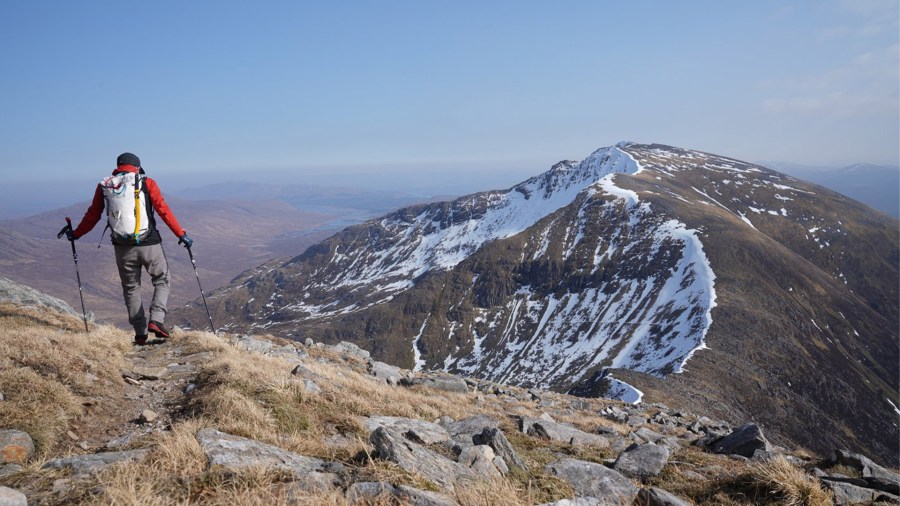
Using a pair of poles to descend. Photo: David Lintern
The best trekking poles of 2023: our expert pick
This article highlights the results of extended trekking pole tests by our reviewer, David Lintern, with contributions from Chris Townsend and Will Renwick. The chosen 10 hiking poles have all been judged and selected for their performance, durability, reliability and value.
- Pacerpole Dual Lock | Chris’ Best Buy | $132 | £107 | Pair
- Black Diamond Trail | David’s Best Buy | $120 | £95 | Pair | Available from blackdiamondequipment.com
- Silva Trekking Poles Carbon | Recommended | £120 | Pair | Available from Winfields Outdoors
- Komperdell Carbon C3 Cloud Compact | Recommended | $120 | £130 | Pair | Available from alpinetrek.co.uk
- Trekmates Fold Lock | International Shipping | £30 | Single | Available from gooutdoors.co.uk
- Salewa Carbonium Ascent Poles | £125 | Pair | Available from salewa.com
- Alpkit Carbon Marathon | $100 | £80 | Pair
- Komperdell Trail FXP Foldable | $200 | £140 | Pair | Available from alpinetrek.com
- Leki MCT 12 Vario Carbon | | $150 | £120 | Pair
- CimAlp Distance Carbon | $90 | £120 | Pair
How we test
This article features reviews from David Lintern. David has over a decade of experience as a photographer and writer and has produced dozens of articles for magazines, newspapers and organisations. His first feature for The Great Outdoors covered a walk across the Pyrenees in 2011 and he’s been a regular contributor ever since. He is the author of three books and has campaigned actively on access and environmental issues. David is based in the Cairngorm National Park. Also included within this guide are contributions from Chris Townsend, Chris has been our Gear Editor since 1991 and is one of the world’s most highly respected commentators on outdoor clothing and equipment and is also well-known as an author and long-distance hiker. He is the award-winning author of 22 books, including The Backpackers’ Handbook, the Cicerone guide to walking in Scotland and Out There, a recent collection of essays.
Pacerpole Dual Lock – Chris Townsend’s Best Buy

- Rating: 4.5/5
- Pros: shaped grips, dual lock adjustment
- Cons: quite expensive
- Price: $132 | £107 (pair)
- Weight: 285g (per pole)
Length: 97-133cm | Shaft: carbon fibre | Grip: moulded thermoplastic rubber | Adjustment: lever lock
Pacerpoles have shaped handles that are comfortable and effective. They hold the hands in a more relaxed position and require less stress and effort to use than straight-handled poles. There’s no need to use straps, as they can get in the way.
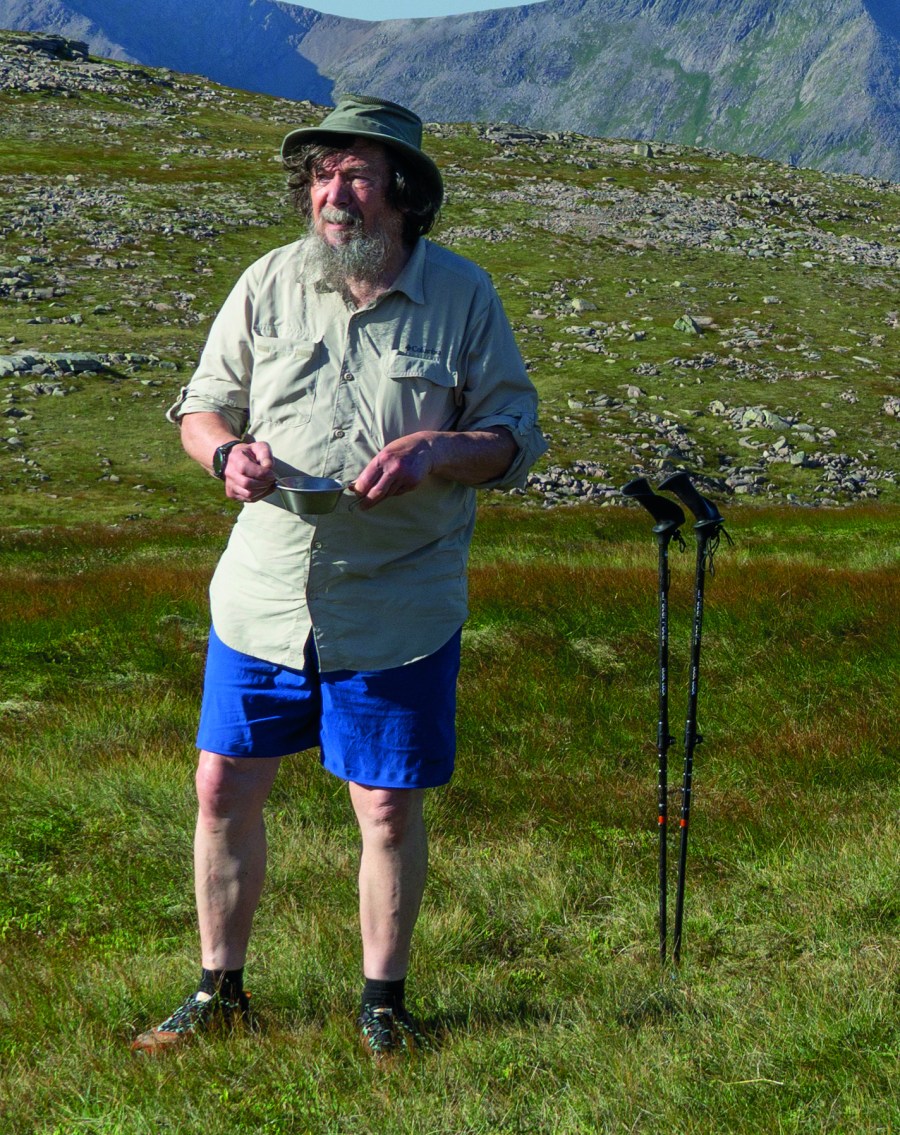
Chris Townsend putting his Pacerpoles through their… well, paces. Credit: Chris Townsend.
Most models of Pacerpoles have internal twist-locks. These are okay but can jam or loosen. The Dual Lock system is far superior, though it does cost more. This involves just one lever lock between the upper and middle sections for adjusting the length.The middle and lower sections connect with an internal cord and locking spring-activated pin at a fixed height. Many people using these will find they adjust the height far more often than they would with poles that have twist-locks as it’s easier to do and there’s less risk of them failing. The upper section can be detached completely from the middle section and like this length is just 56cm for carrying.
Available at: pacerpole.com
Black Diamond Trail
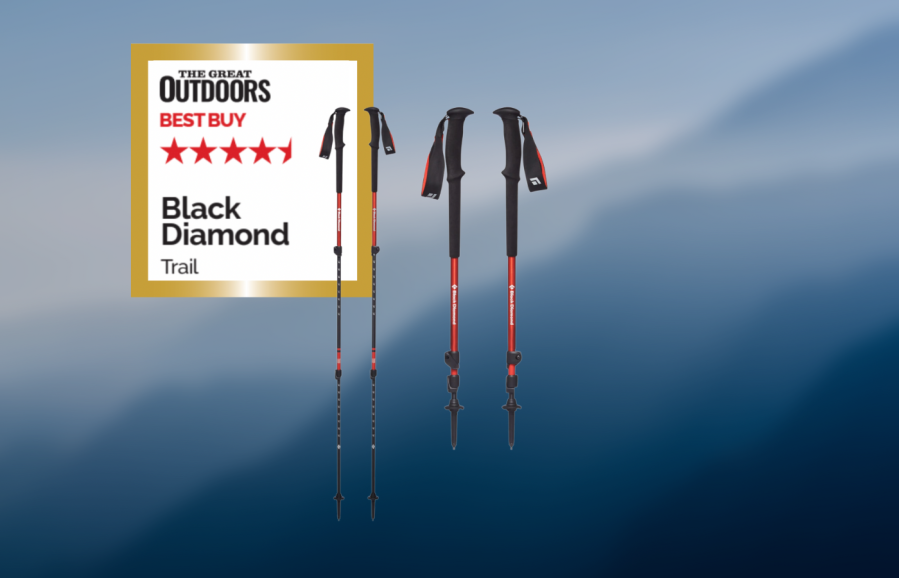
SQUIRREL_BUTTON_12863086
- Rating: 4.5/5
- Pros: Price, durability
- Cons: Not the lightest
- Price: $120 | £95 (pair)
- Buy now from blackdiamondequipment.com
- Weight: 0.56 lb. | 256g each
Materials: aluminium shaft, foam handle | Features: 3-section pole, fabric straps, flick lock system, 3-season and winter baskets supplied | Sizes: packed length 64cm, fully extended 140cm
The Black Diamond Trail is a tried and true trekking pole whose strength lies in its simplicity. It’s a 3-section aluminium pole with instantly readable measurements in metric given on the lower two sections, and a good range of height adjustability. The foam handle is well suited for medium-sized hands and comes in a single, long piece, with very basic moulding for the bottom of the palm. In combination with a reasonable price, the Black Diamond Trail is an excellent offering that gets my recommendation.
Read our full Black Diamond Trail review
Komperdell Carbon C3 Cloud Compact
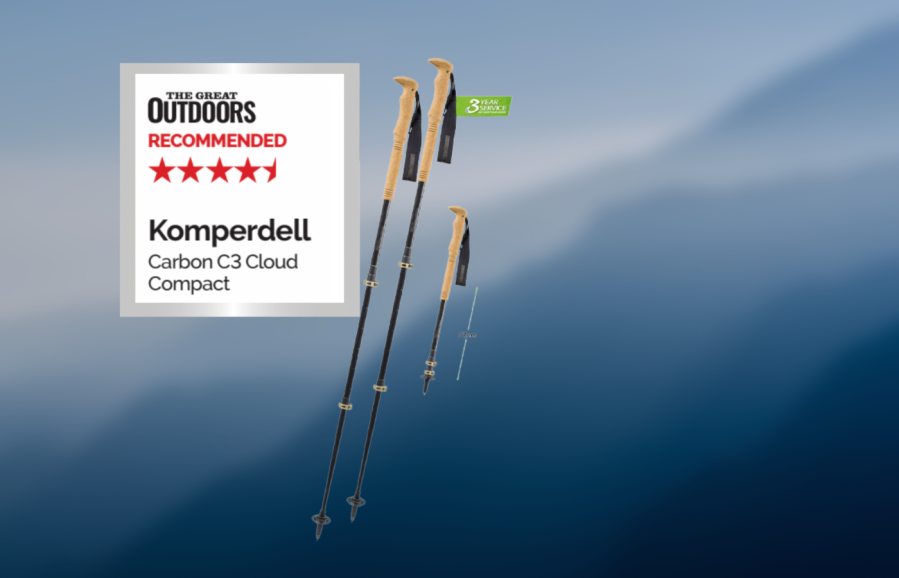
SQUIRREL_BUTTON_12925949
- Rating: 4.5/5
- Pros: Small packed length, lightweight, very rigid, good handle
- Cons: Irregular shaft diameter (won’t accept connector for pyramid tarp use), expensive
- Price: $120 | £130 (pair)
- Buy now from alpinetrek.co.uk
- Weight: 0.45 lb | 206g each
Materials: carbon shaft, aluminium locks, foam handle | Features: 3-section pole, fabric straps, flick lock system, 3-season baskets supplied. | Sizes: packed 57.5cm, fully extended 121cm
The Cloud Compact from Komperdell is the lightest trekking pole in this test, but very tough and well-designed. It’s a three-section, all-carbon pole, with the sections being adjusted by flick locks. In use, the use of carbon throughout means the weight balance shifts towards the upper third of the pole, but they are so lightweight overall they are hard not to enjoy using.
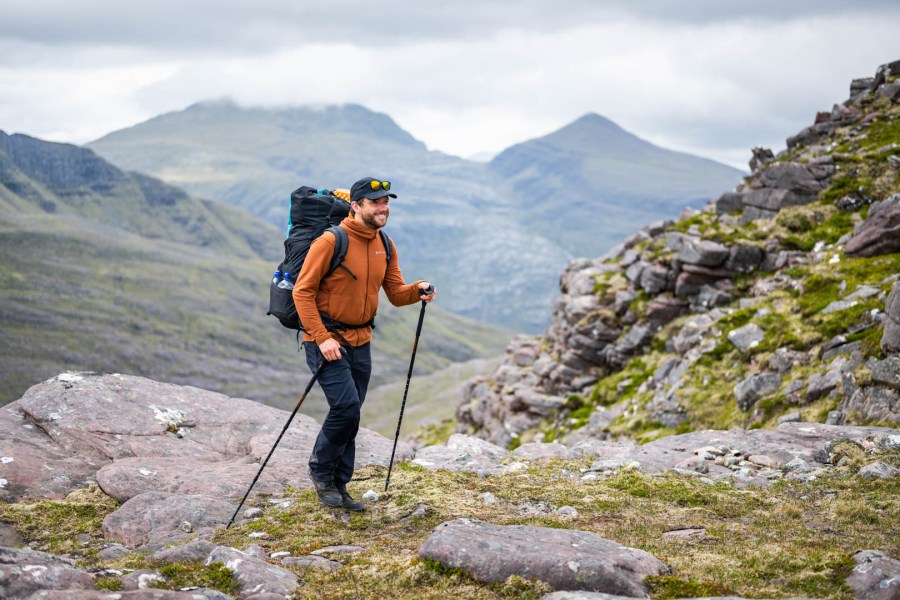
The Great Outdoors editor Carey using trekking poles in the Scottish Highlands. Photo: James Roddie
Read our full Komperdell Carbon C3 Cloud Compact review
Available at: komperdell.com
Silva Trekking Poles Carbon
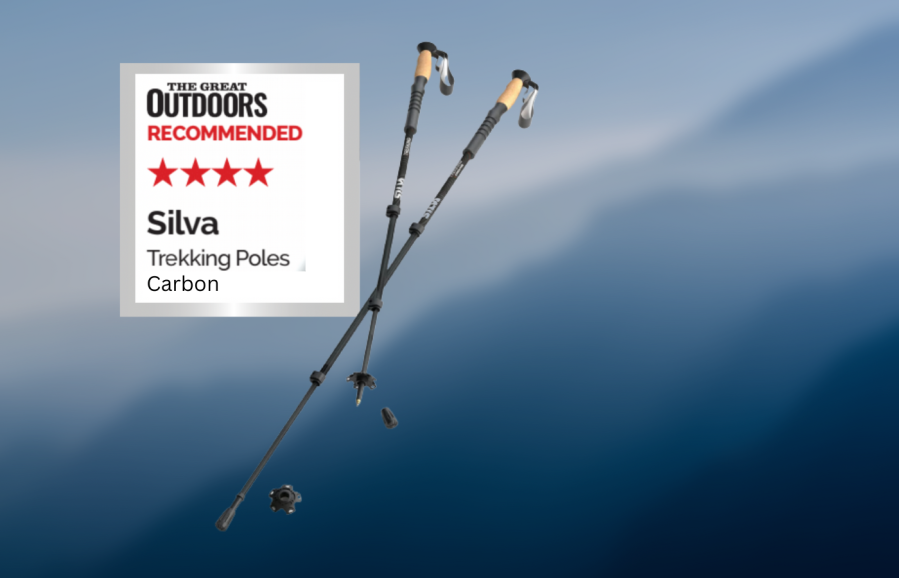
SQUIRREL_BUTTON_12863087
- Rating: 4/5
- Pros: Comfy handle material, robust in use, lightweight
- Cons: Large handle, flick lock adjusters prone to snagging
- Price: $136 | £120 (pair)
- Available from Winfields Outdoors
- Weight: 215g each
Materials: carbon shaft, cork handles | Features: cork handle, fabric strap, 3-section pole, winter basket and rubber feet supplied | Size: packed length 66cm, fully extended 140cm
Silva all-carbon trekking poles are lightweight, comfortable to use and exceptionally robust. The handles are luxurious and provide excellent sweat management, but the grips are on the large size, even for my ‘size large’ hands. Thinner carbon poles tend to bend or wobble under strain, but these are well-made, wider-diameter shafts that have held a shelter up in high winds without complaint. In conclusion, there’s lot to recommend here, especially if you have big mitts.
Read our full Silva Trekking Poles Carbon review
Trekmates Fold Lock
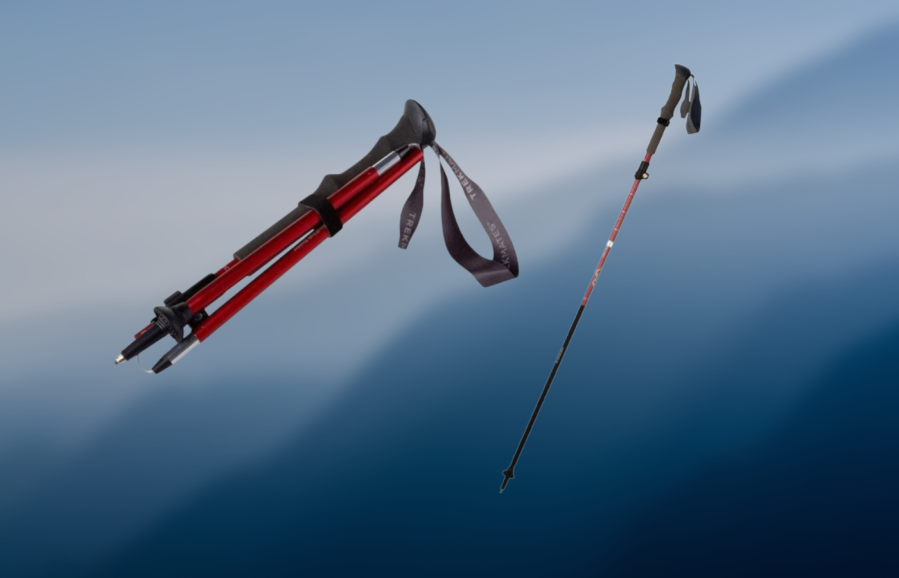
SQUIRREL_BUTTON_12863089
- Rating: 3.5/5
- Pros: Cost, small size when packed, solid aluminium shaft
- Cons: Small lower handle, fold lock system not as durable
- Price: £30 (single)
- Buy now from gooutdoors.co.uk
- Weight: 269g each
Materials: aluminium, foam handle | Features: 3-section pole, fabric strap, fold lock system with flick lock height adjuster, 3-season basket supplied. | Sizes: packed length 35cm, fully extended 125cm
The Trekmates are the budget option here for trekking poles and would be my personal choice of the two in this review that incorporate a folding lock system. It’s advertised as a five-section unit, but in practical use it’s four. The pole sections are ‘aircraft grade’ aluminium (marketing speak for ‘tough’?). and the unit is held together by a plastic-coated wire cord.
Read our full Trekmates Fold Lock review
Salewa Carbonium Ascent Poles

SQUIRREL_BUTTON_12925952
- Rating: 4/5
- Pros: Very robust, ball basket design
- Cons: Weighted heavier at tip end
- Price: $130 | £125 (pair)
- Buy now from salewa.com
- Weight: 232g each
Materials: carbon (upper) and aluminium (lower) shafts, foam handle | Features: 3-section pole, fabric straps, foam handle, flick lock system, 3-season basket supplied. | Sizes: packed 68cm, fully extended 138.5cm
The Carbonium is a three-section, composite pole – the upper two are carbon and the lower third is aluminium. Each section is held together with flick locks, tensioned by recessed Phillips screw. In use, the poles proved secure and rigid, but the use of carbon in the upper sections and aluminium lower down means the pole feels unevenly weighted at the tip.
Read our full Salewa Carbonium Ascent Poles review
Available at: salewa.com
Alpkit Carbon Marathon
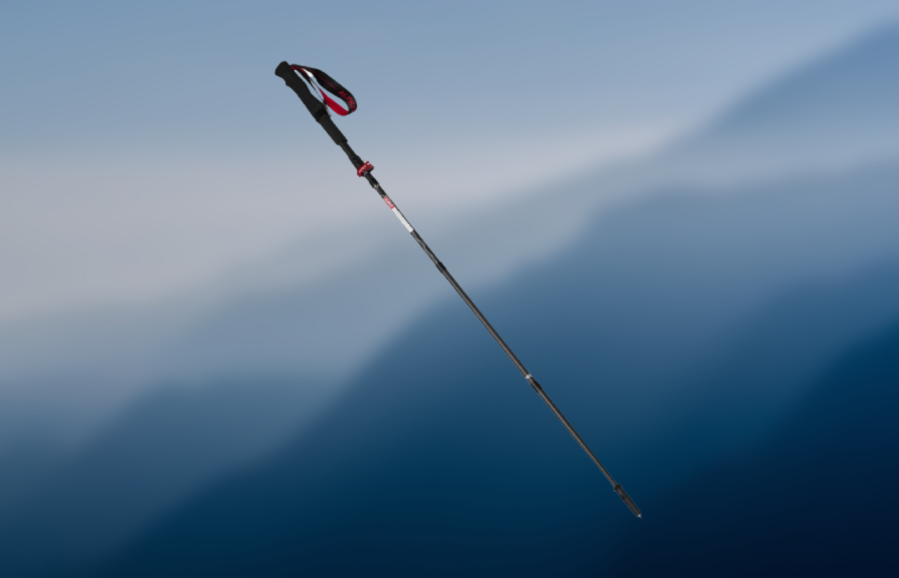
- Rating: 2/5
- Pros: Cost, weight
- Cons: Narrow range of useable length 113-130cm, fold lock durability, poor strap
- Price: $74.99 | £80 (pair)
- Weight: 0.50 lb. | 229g each
Materials: carbon, foam | Features: 3-section carbon, foam handle, fabric strap, fold lock with flick lock height adjuster, 3-season basket and rubber feet supplied | Sizes: packed 42cm, fully extended 130cm
All-carbon, five-section, folding lock-based hiking pole that folds small and is quite lightweight. The sections go together easily, but the brass pin that holds the sections once assembled is prone to sticking. I’ve managed to field repair with a penknife each time. Sadly, in use the poles wobbled and bowed, and felt very insecure once off a groomed trail.
Read our full Alpkit Carbon Marathon review
Available at: alpkit.com
Leki MCT 12 Vario Carbon
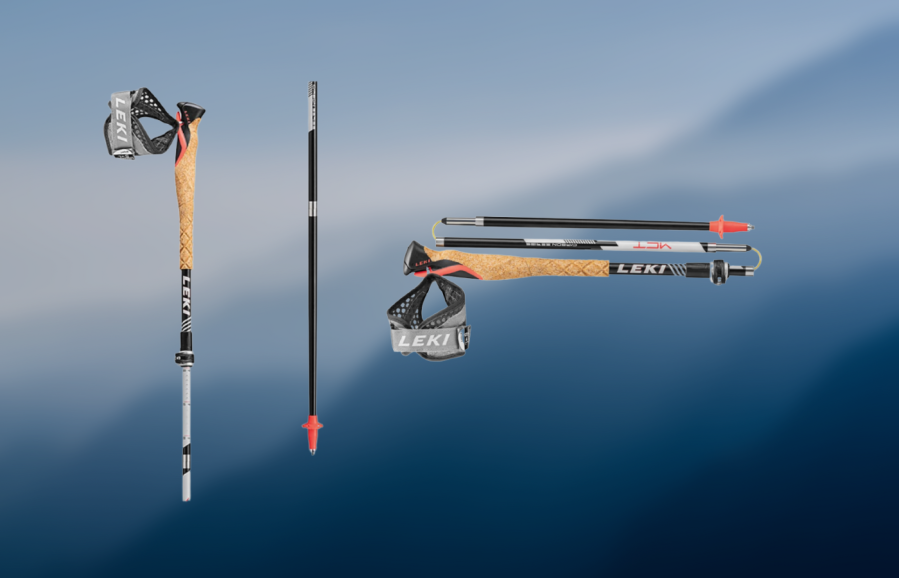
SQUIRREL_BUTTON_12876842
- Pros: low weight but durable
- Cons: none
- Price: $250 | £120 (pair)
- Weight: 0.44 lb. | 200g each
Materials: carbon Features: 3-section pole, fabric gloved straps, Speed lock system | Packed length: 42cm Size: 110 – 130cm.
This is an extremely lightweight trekking pole that’s very convenient for those who like to travel light on the trail. What’s particularly impressive, however, is the fact that it’s also very durable and dependable.
Leki are hiking pole-making experts and all the details here have therefore been nailed. Folding the pole and deploying it is quick and easy, height adjustment can be done in an instant and the handle is grippy and comfortable even when it’s wet.
Then there’s the impressive strap system which borrows from the same tech that’s seen in cross country skiing. This involves a wrist glove with a loop that clips onto the top of the pole, letting you swing the pole without having to grip tight to the handle – as a cross country skier would do.
Leki say this pole is made from cross trail activities. That means it’s suitable for both hiking and running, and we’d agree.
Available at: leki.co.uk
CimAlp Distance Carbon

- Pros: build quality, price
- Cons: none
- Price: $90 | £120 (pair)
- Weight: 0.50lb. | 229g each
Materials: carbon Features: 3-section pole, fabric straps, easy-lock tightening system, snow baskets and nordic walking tip ends | Packed length: 36cm. Size: 110 – 130cm.
This is an excellent trekking pole. It’s light, durable, practical, reliable and it’s also good value. CimAlp, in case you don’t know them, are very similar to Alpkit – they offer good products and sell them at good prices.
This pole is a z-folding one that’s quick to stash and deploy. There’s height adjustment, a comfortable handle that extends down the pole and various accessories that adapt the pole’s tip to suit different types of surfaces underfoot.
Handily, the Distance Carbon comes with a handy little mesh stash sack too.
Available at: cimalp.co.uk
Komperdell Carbon Trail FXP
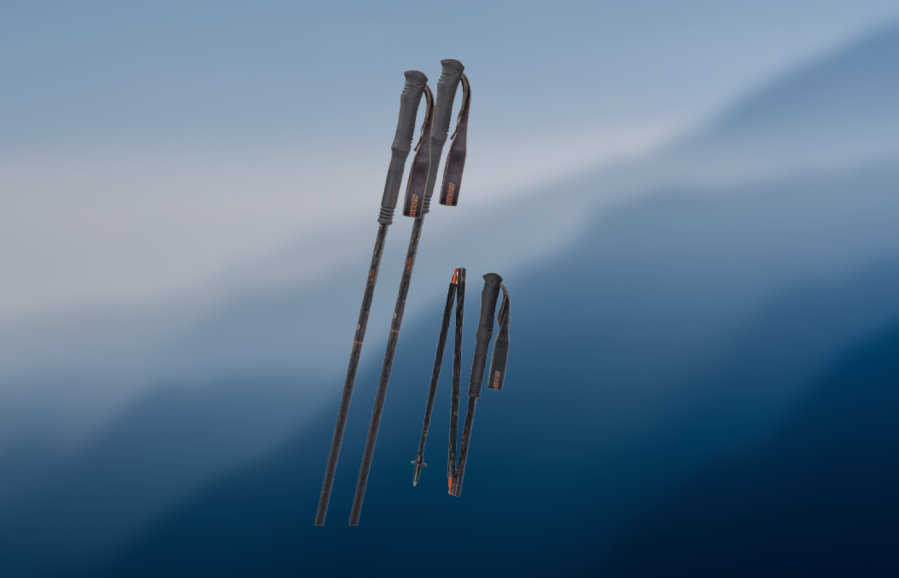
SQUIRREL_BUTTON_12925955
- Pros: quick to deploy, light
- Cons: fixed height
- Price: $200 | £140 (pair)
- Buy now from alpinetrek.com
- Weight: 0.41 lb. | 189g (per pole)
Materials: carbon composite | Features: 3-section pole, foam handle, fabric strap | Packed length: 41cm | Size options: 105, 115, 125, 135 cm
This trekking pole is made primarily for trail running but it’s certainly suitable for hiking too. The main thing to know about it is that it is self deploying; that means that it can snap from its bundled down form into a rigid rod in a split second. There’s a little Velcro strap to keep it from deploying when you don’t want it to deploy and when this is released it’ll quickly snap into shape, so care is required!
The Carbon Trail.FXP is remarkably light too, which is impressive given the unique technology Komperdell have implemented here.
It’s worth bearing in mind that this doesn’t have height adjustment, so you need to make sure you buy the right sized pole for you out of the four heights Komperdell offer.
Available at: komperdell.com





